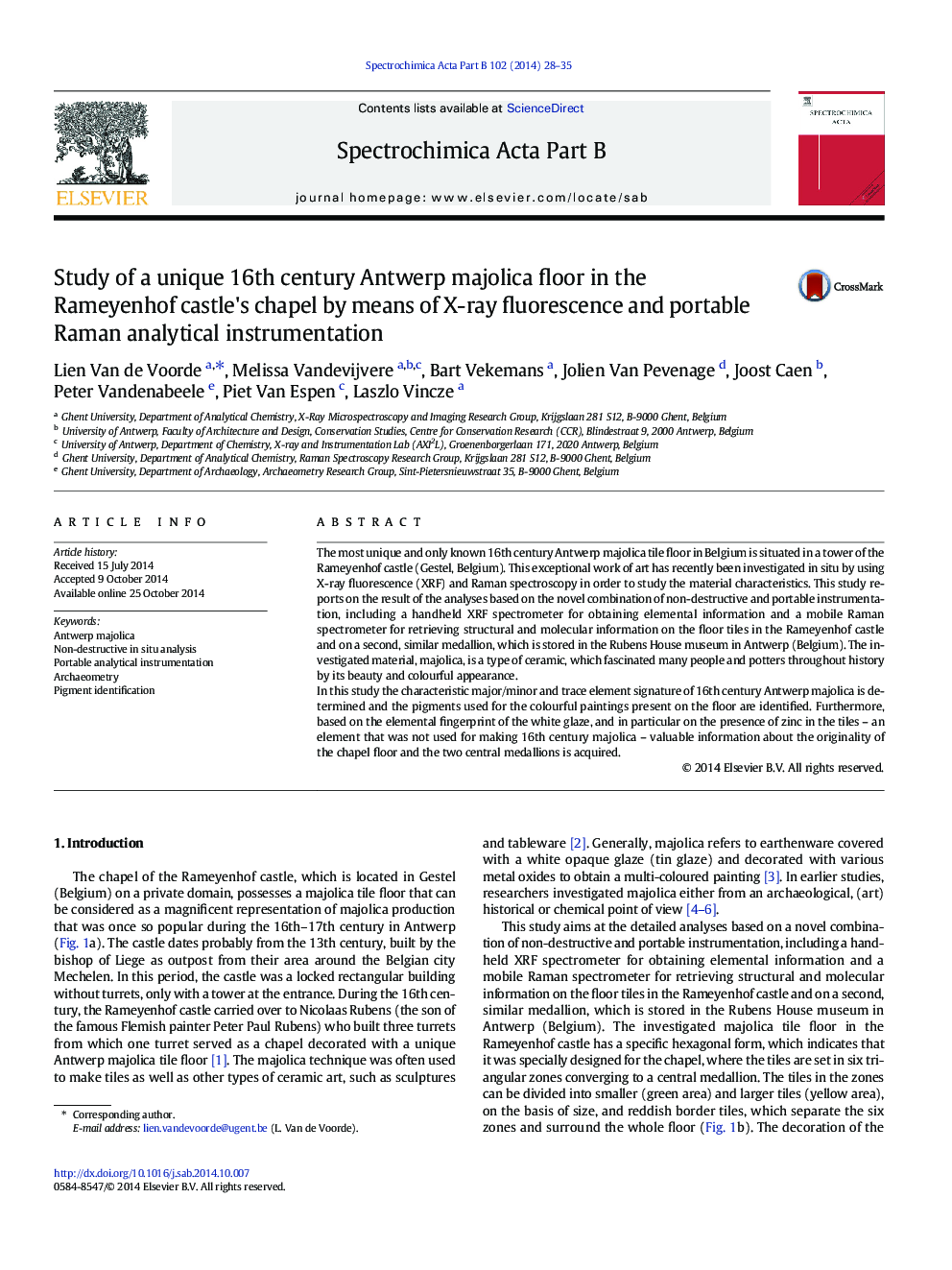| Article ID | Journal | Published Year | Pages | File Type |
|---|---|---|---|---|
| 1239500 | Spectrochimica Acta Part B: Atomic Spectroscopy | 2014 | 8 Pages |
•In situ, non-destructive investigation of a unique Antwerp majolica floor•Multi-methodological approach: make use of a mobile Raman and X-ray spectrometer•Obtaining information about layered structure of Antwerp majolica•The used pigments in the majolica floor in Rameyenhof castle are characterized.•The verification of the authenticity of the floor and two central medallions are performed.
The most unique and only known 16th century Antwerp majolica tile floor in Belgium is situated in a tower of the Rameyenhof castle (Gestel, Belgium). This exceptional work of art has recently been investigated in situ by using X-ray fluorescence (XRF) and Raman spectroscopy in order to study the material characteristics. This study reports on the result of the analyses based on the novel combination of non-destructive and portable instrumentation, including a handheld XRF spectrometer for obtaining elemental information and a mobile Raman spectrometer for retrieving structural and molecular information on the floor tiles in the Rameyenhof castle and on a second, similar medallion, which is stored in the Rubens House museum in Antwerp (Belgium). The investigated material, majolica, is a type of ceramic, which fascinated many people and potters throughout history by its beauty and colourful appearance.In this study the characteristic major/minor and trace element signature of 16th century Antwerp majolica is determined and the pigments used for the colourful paintings present on the floor are identified. Furthermore, based on the elemental fingerprint of the white glaze, and in particular on the presence of zinc in the tiles – an element that was not used for making 16th century majolica – valuable information about the originality of the chapel floor and the two central medallions is acquired.
